Presidents: Zachary Taylor
Birthplace: Barboursville, Virginia
Visited in 2010.
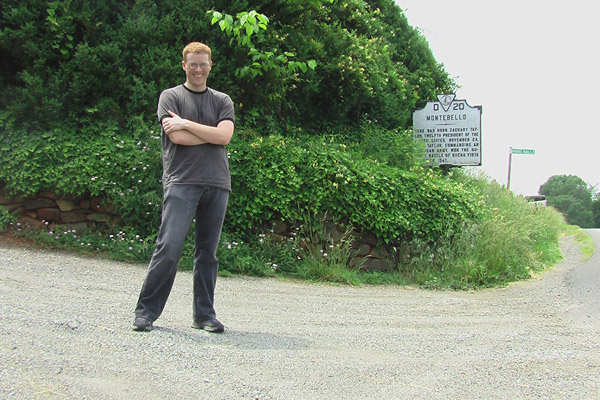
The excitement is heightened by the possibility of getting hit by a car!
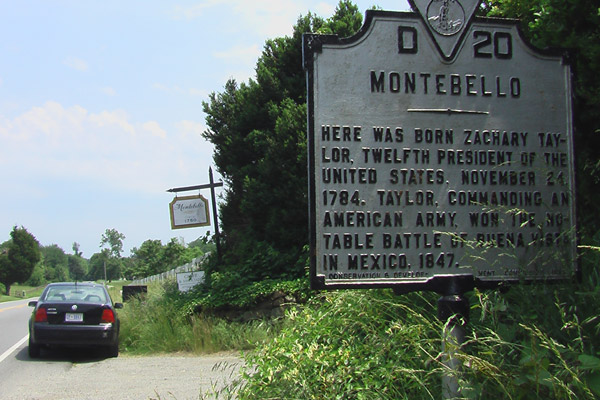
You were promised a sign and by golly here's a sign.
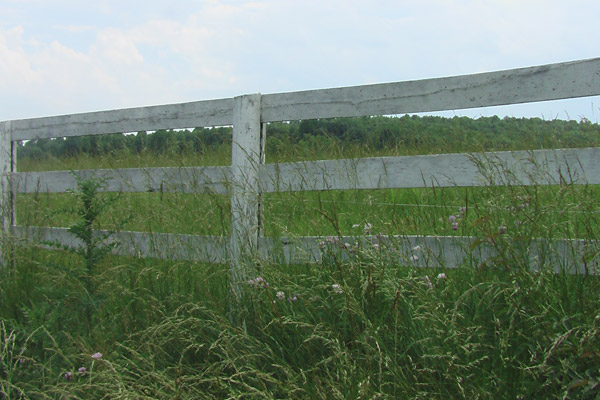
A nice representative image of what you can see at "Montebello."
Zachary Taylor was a war hero and president. But first and foremost, he was a Virginian, and so he gets that state's highest honor: A highway road sign!
The sign, on the edge of Highway 33 near Barboursville, marks the spot where Taylor was born. Maybe. Apparently the exact location of his birth is in dispute. We've all had that famous Virginia drinking debate, "Where was Zachary Taylor REALLY born?" It usually ends in violence, and so the state opted to end the bloodshed by putting a very definitive metal sign on a shoulderless road next to a private driveway.
The location of the sign was probably determined by a bribe, so that all the "Zachary Taylor birthplace" tourism money would get funneled to the Highway 33 corridor. It is therefore surprising that you can't visit any house or tour any ground. It is also surprising that there's not even a parking spot where you could safely pull over to take a picture. And come to think of it, I didn't see any construction site for a forthcoming Zachary Tayor theme park. But I have to believe it's in the planning stages.
The Montebello plantation was apparently NOT the property of the Taylor family. Richard Taylor had sold his farm (near Culpepper, Va.) and was in the process of moving his pregnant wife west. But a measles outbreak forced them to make a pit stop at Montebello, and Montebello is allegedly where Taylor's birth occurred. It's like the story of Mary and Joseph, only Zachary Taylor was sent to earth not to save mankind, but to beat up on Mexicans and Native Americans.
Having acquired the stink of Virginia respectability, the baby Taylor was moved to Kentucky, where he grew up in that state's backwards plantation culture. But he shall never be remembered among the awful pantheon of presidents from Kentucky. Nay, he stands proudly at the side of John Tyler, and William Henry Harrison: A VIRGINIAN!
Jefferson Barracks, St. Louis, Missouri
Visited in 2011.
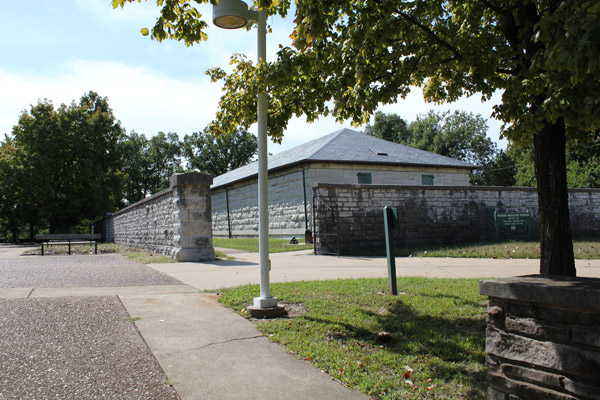
The exterior of the old powder house, which is now a tiny museum.
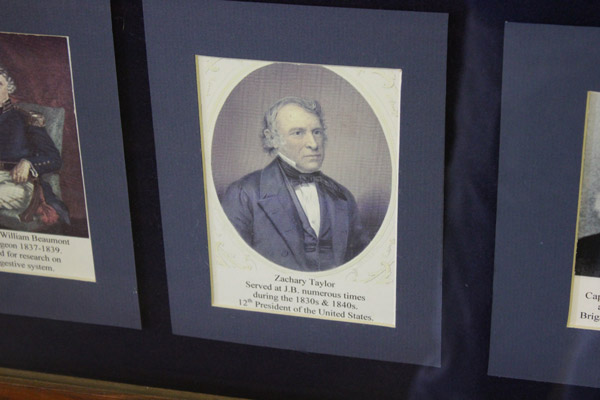
Zachary Taylor gets his props in the barracks museum.
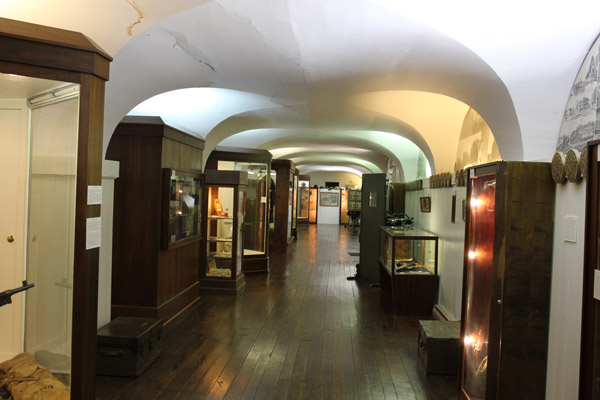
Keep your powder dry, and your historical exhibits even more dry.
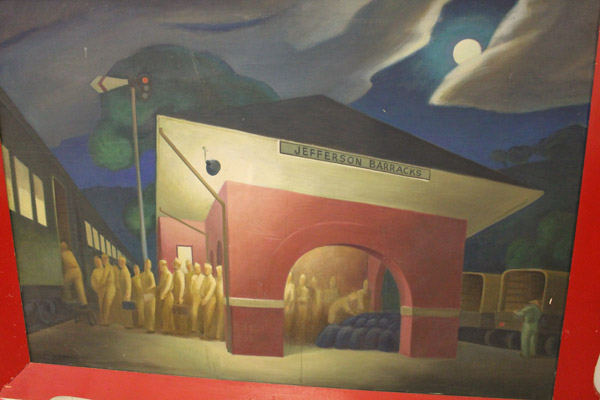
A painting invoking the WWII experience at the barracks.
Modern America spans from sea to shining sea. The Midwest has become the "heart" of the nation -- where people earnestly believe in democracy, freedom, and fried cheese products.
But not that long ago, it was the frontier. People weren't going there to hunker down and live out a John Cougar Mellencamp song. They were going there to escape their gambling debts and live in perpetual fear. There were settlements, but anything to the west of those settlements was the American equivalent of "here there be dragons." The dark parts of the map were filled with disease, animal attacks, Native Americans and the occasional European military force.
Americans handled this fear by building military bases, and Jefferson Barracks was one of the greatest. It opened for business in 1826, and it quickly became one of the most important military outposts in the country. The location was practically perfect. It's situated roughly in the latitudinal middle of the country, and it's right on the Mississippi River. Today, we're spoiled by planes, trains and automobiles. In the 1820s, rivers were the only highways that mattered, and the Mississippi was the greatest of all. Troops could gather at St. Louis, or deploy from St. Louis, with relative ease, regardless of where they were coming from or going to. (Relative is the important word there. It still would have sucked to travel anywhere in 1826, but the Mississippi made it less sucky.) It was also easier to supply anyone training there.
For all these reasons, Jefferson Barracks became a setting in the life of many famous Americans. Most generals from the Indian wars made pit stops at Jefferson Barracks; so did the heroes of the Mexican-American War, and many of the famous faces from the Civil War. It was one of the military's most important training and mustering sites from the early 19th century up to 1946 -- Robert E. Lee once commanded the post, Jefferson Davis served there, and Zachary Taylor did a few stints alongside the Mississippi. In September 1843, recent West Point graduate Ulysses Grant reported to Jefferson Barracks. His West Point roommate was also there, and that roommate happened to be from the St. Louis area. When the roommate took Grant along in the quest for a home-cooked meal, Grant finally had a face-to-face meeting with his sister Julia. She ended up marrying Grant.
And let's not forget John McNulty. My grandfather did his basic training at Jefferson Barracks in World War II. Pop Pop had stories about overcoats getting so frozen from the winds coming of the river, that they stood up on their own. He's the reason I wanted to see the place.
Today, the Barracks grounds have been divided into a National Guard base, a veterans cemetery, some private housing developments and open fields. A few old powder houses have been converted to museums staffed by very courteous senior citizens. There was a cross-country meet going on when I came to visit, and I think generations of soldiers would be thrilled to know that high school guys in short shorts were cavorting over the same parade grounds where they once froze their nuts off.
It's not the most dynamic historic site, but Jefferson Barracks is one hell of a crossroads. It's America's way station, where people stopped in on their way to big things, some of them good, some of them bad. I'd say it's worth visiting, and sitting in the grass for a few minutes before getting on your way.
Zachary Taylor National Cemetery, Louisville, Kentucky
Visited in 2011.
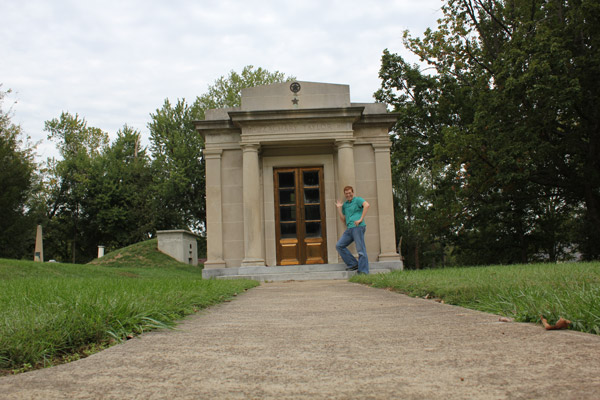
Zachary Taylor's final resting place ... for now.
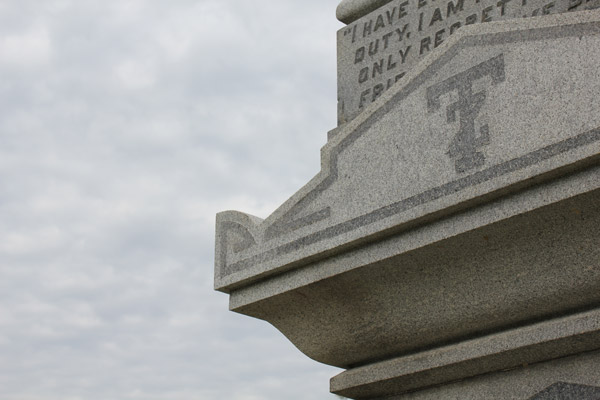
A detail of the Taylor monument, near the mausoleum.
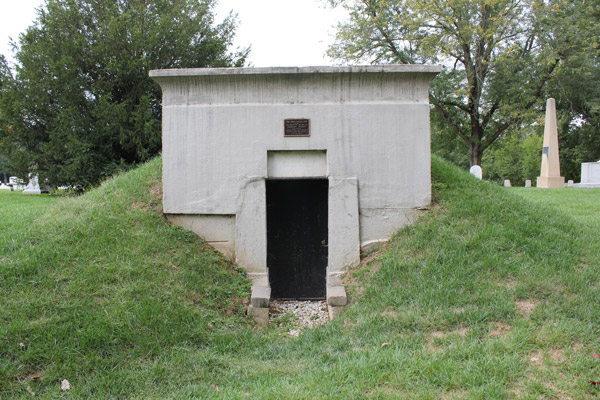
Taylor's original mausoleum, still standing for graveyard enthusiasts to enjoy.
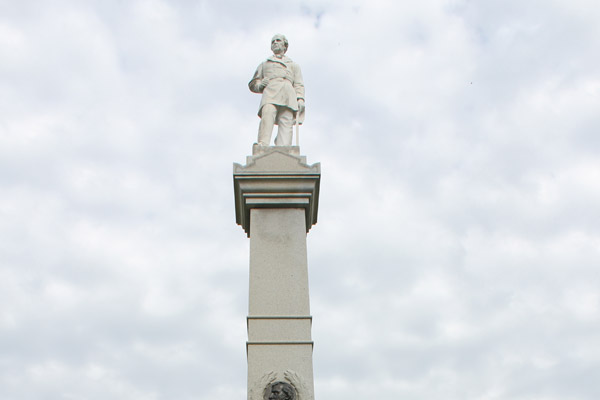
The top of the Taylor memorial. Zach-o, not on his back-o.
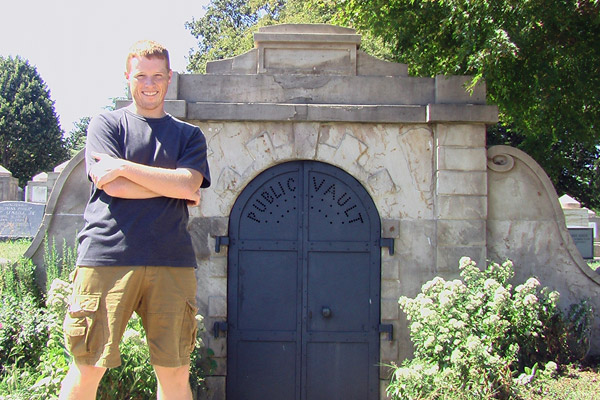
Congressional Cemetery: A bonus shot of the "public vault" in D.C.
Zachary Taylor earned the monkier "Old Rough and Ready," not just for his slovenly appeal, but for an indifference to danger: he would join his men in the thick of battle, riding his horse and daring the enemy to take him out. In his illustrious 40-year career, he survived wars with the British, the Black Hawks, the Seminoles and the Mexicans.
But he lost the war with 19th-century produce. At a groundbreaking ceremony for the Washington Monument on an oppressively hot July 4, Z.T. chugged a pitcher of ice milk and chowed on some possibly tainted fruit. His bowels were rough, but not ready, and a few weeks later the meaty hand of Millard Fillmore was on the national tiller. As it turns out, death is just a bowl of cherries. HAH!
At first, Taylor's body was stored in the District of Columbia. In ye olde days, prominent people who kicked it in the District were stashed in the "public vault" at Congressional Cemetery, on the banks of the Anacostia River. They would remain there until their remains could be removed to a final resting place. Besides Taylor, William Henry Harrison, John Quincy Adams and Dolley Madison were tenants in this fine structure.
When the time came, Taylor's body was shipped back home to Louisville, Kentucky, the site of his family plantation. Oddly enough, his body has not enjoyed a very restful eternity.
Taylor's original crypt in Louisville was a tad on the plain side. In the 1920s, someone decided to pimp his crypt. The old structure was (presumably) converted to a walk-in beer fridge to accommodate shaken mourners, and Taylor was moved a short distance to an excellent mini-mausoleum. When I visited, the windows were sweating from all the moisture getting inside, and there were lots of wasp corpses visible on the floor of the interior, because they had clearly built a nest somewhere on the structure.
Now, you're probably thinking that his corpse has rested there ever since, peacefully slumbering as a mildew-covered nest for hornet larvae. But you'd be wrong! In the early 1990s, someone got the notion that Taylor was poisoned, perhaps by the president of the Millard Fillmore fan club. So Taylor was yanked from his crypt. Samples were taken, no poison was found, and Taylor was put back on the shelf.
He's due for another disturbance around 2050. Every 70 years or so, it's good to air out your dead presidents, whether they need it or not. I have to say, I liked the grave. The surrounding land -- once part of the Taylor estate -- has been converted into a veterans cemetery, so the general is fittingly surrounded by troops. There's a nice monument (a statue on a column) a few yards from the crypt. But the cemetery is also a fine example of history colliding with the present. It's surrounded on all sides by suburban Louisville. Little girls were playing on a swing set about 100 feet away, and some people had a basketball hoop setup so close to the cemetery wall that anyone practicing half-court shots might bounce it off the mausoleum. Good luck getting your ball back.
The bummer here is that you can't visit Taylor's home. It's still standing, but it's owned by descendants, and those bastards refuse to turn over their ancestral mansion to accommodate my hobbies. Some people are so selfish.
One fun Taylor fact: He had a daughter who was born in Vincennes, Indiana (which I visited later in the day). That daughter later married one of Taylor's military underlings. That underling was Jefferson Davis. She died a few months into the marriage, but Zachary Taylor's son in law was the president of the Confederacy. Huh.
